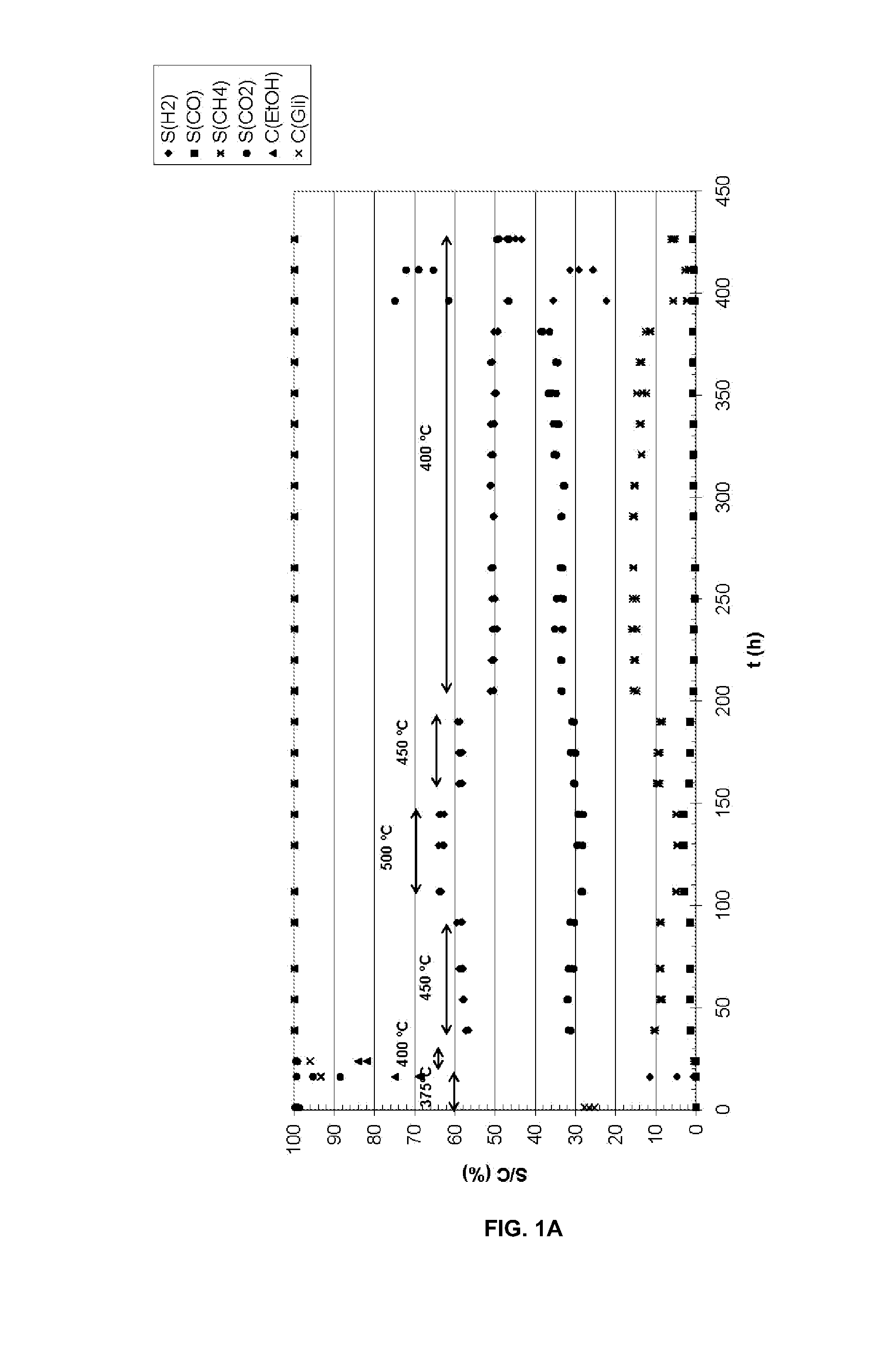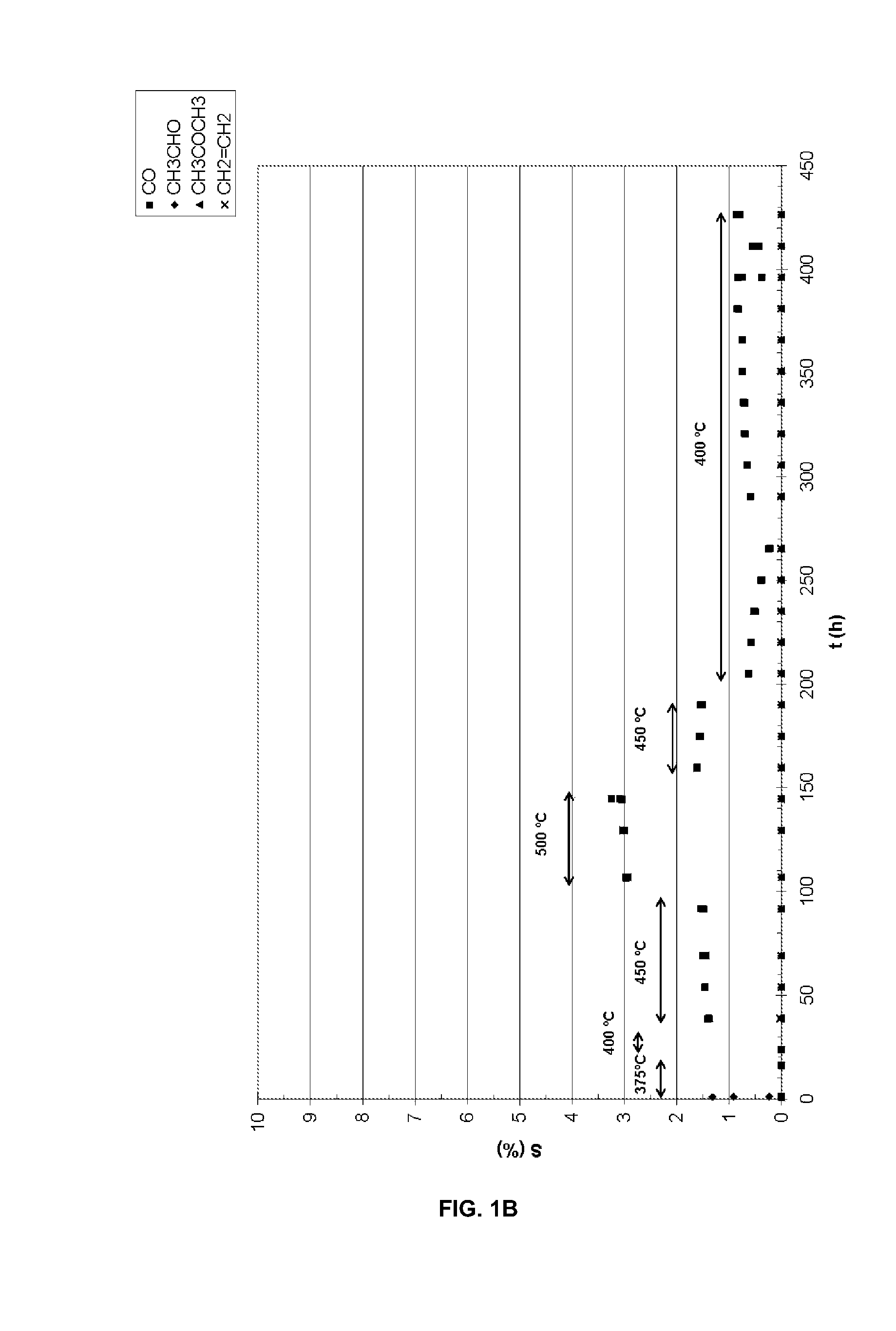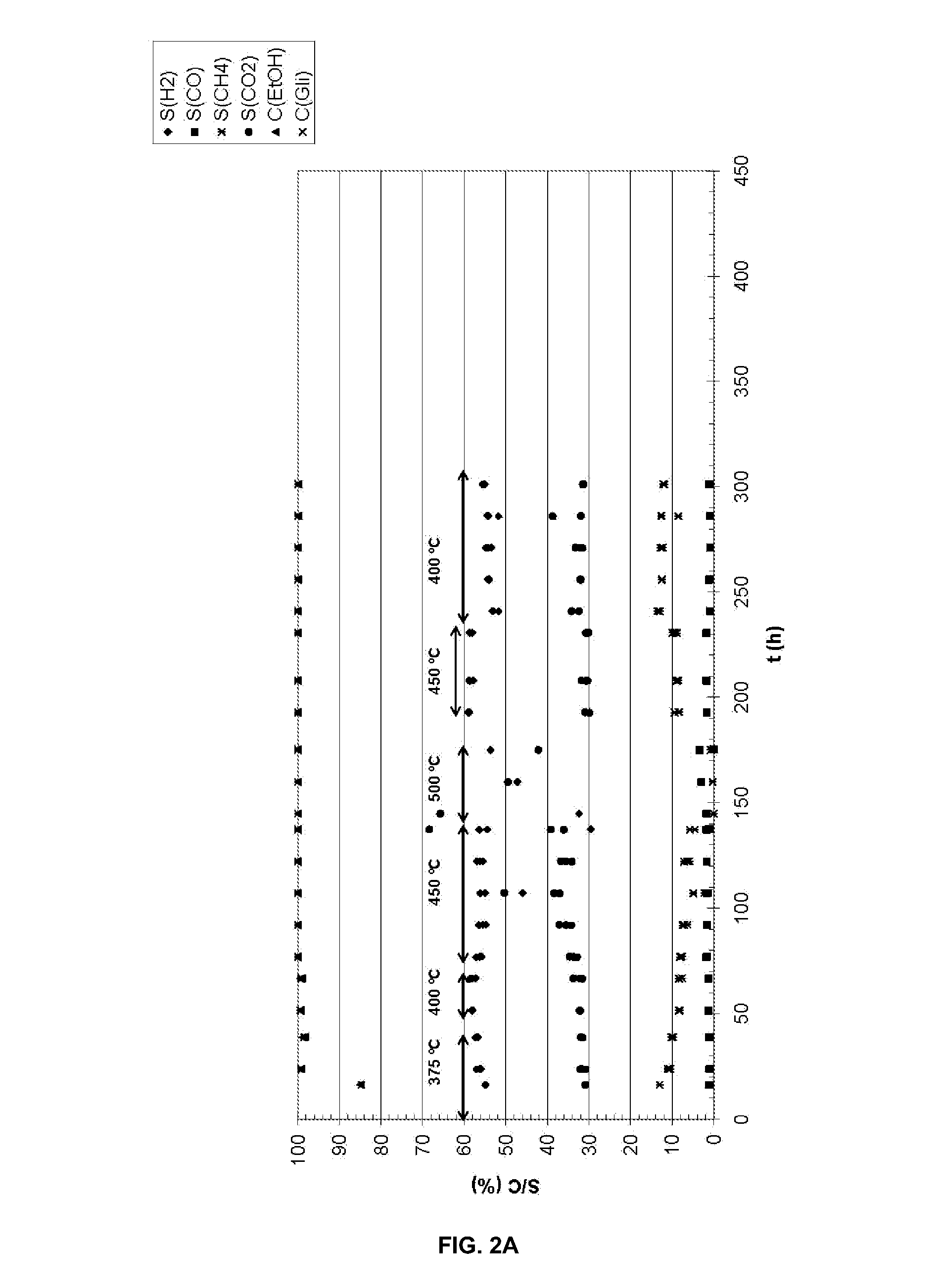Catalysts for the oxidative reforming of alcohols
a technology of catalysts and alcohols, applied in metal/metal-oxide/metal-hydroxide catalysts, inorganic chemistry, hydrocarbon preparation, etc., can solve the problems of reducing the economic yield of the process, and catalysts containing very costly metals
- Summary
- Abstract
- Description
- Claims
- Application Information
AI Technical Summary
Benefits of technology
Problems solved by technology
Method used
Image
Examples
examples
[0061]The following examples are presented as an additional guide for the average person skilled in the art and in no case should they be considered a limitation of the invention.
A.—Preparation of the Catalyst:
example a1
[0062]To prepare a supported catalyst of Co and Ru with K, 0.038 g of RuCl3.H2O are weighed of the commercial salt which contains 35-40% of Ru, 1.974 g of Co(NO3)2.6H2O and 0.134 g of KNO3 and they are dissolved 3 mL of H2O. On the other hand, 5.005 g of CeO2—ZrO2 are weighed which are impregnated with the previous solution. Then, the damp solid is dried in the oven at 100° C. for 24 h. Next, the dry solid is calcined at 400° C. for 6 h. It is then reduced under an H2 / Ar (1:2 v / v) 400° C. flow for 4 h. The reduced catalyst can be passivated by treatment at ambient temperature for 1.5 h with an Air / Ar current with a percentage by volume of oxygen of 1.7%.
example a2
[0063]In another case, a supported catalyst of Ni, Ru and Cu with K is prepared by impregnation of 5.006 g of CeO2—ZrO2 with 3 mL of a recently prepared aqueous solution which contains 0.037 g of RuCl3.H2O of the commercial salt which contains 35-40% Ru, 1.987 g of Ni(NO3)2.6H2O, 0.129 g of KNO3 and 0.047 g of Cu(NO3)2.3H2O. The drying, calcining and reducing treatments were exactly the same as those indicated in the other example. The passivation treatment in this case was carried out for 1.5 h at ambient temperature with an air current in Ar which contained 1.9% by volume of oxygen.
[0064]The chemical analysis of the prepared solid is carried out by inductive plasma coupling of a solution obtained after performing the necessary analytical treatments. The analysis methods, although known, have been adapted to the catalysts developed in the present invention. It is necessary to analyse the catalysts synthesized to check that the synthesis has correctly taken place. The characterizati...
PUM
| Property | Measurement | Unit |
|---|---|---|
| Temperature | aaaaa | aaaaa |
| Fraction | aaaaa | aaaaa |
| Fraction | aaaaa | aaaaa |
Abstract
Description
Claims
Application Information
 Login to View More
Login to View More - R&D
- Intellectual Property
- Life Sciences
- Materials
- Tech Scout
- Unparalleled Data Quality
- Higher Quality Content
- 60% Fewer Hallucinations
Browse by: Latest US Patents, China's latest patents, Technical Efficacy Thesaurus, Application Domain, Technology Topic, Popular Technical Reports.
© 2025 PatSnap. All rights reserved.Legal|Privacy policy|Modern Slavery Act Transparency Statement|Sitemap|About US| Contact US: help@patsnap.com



